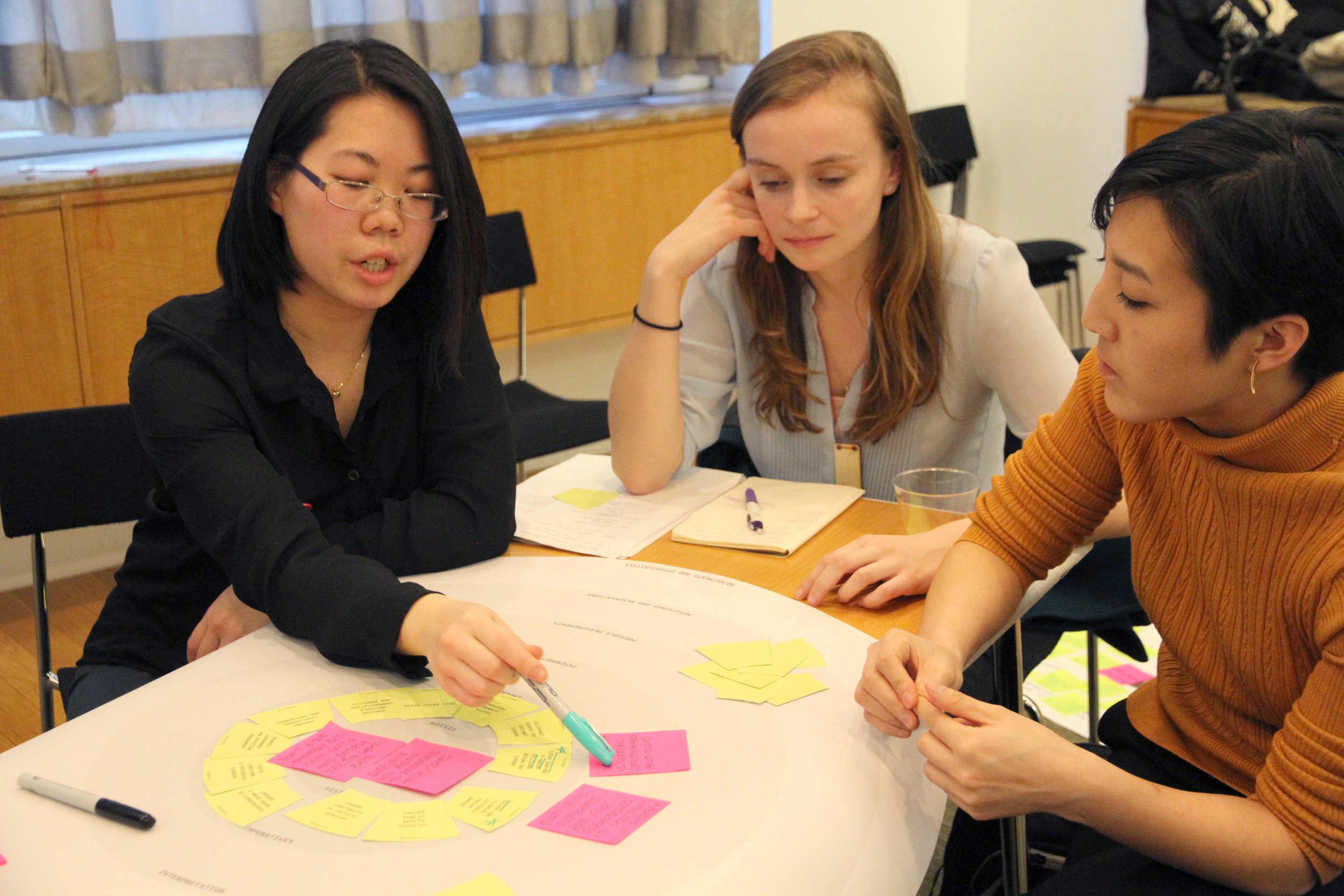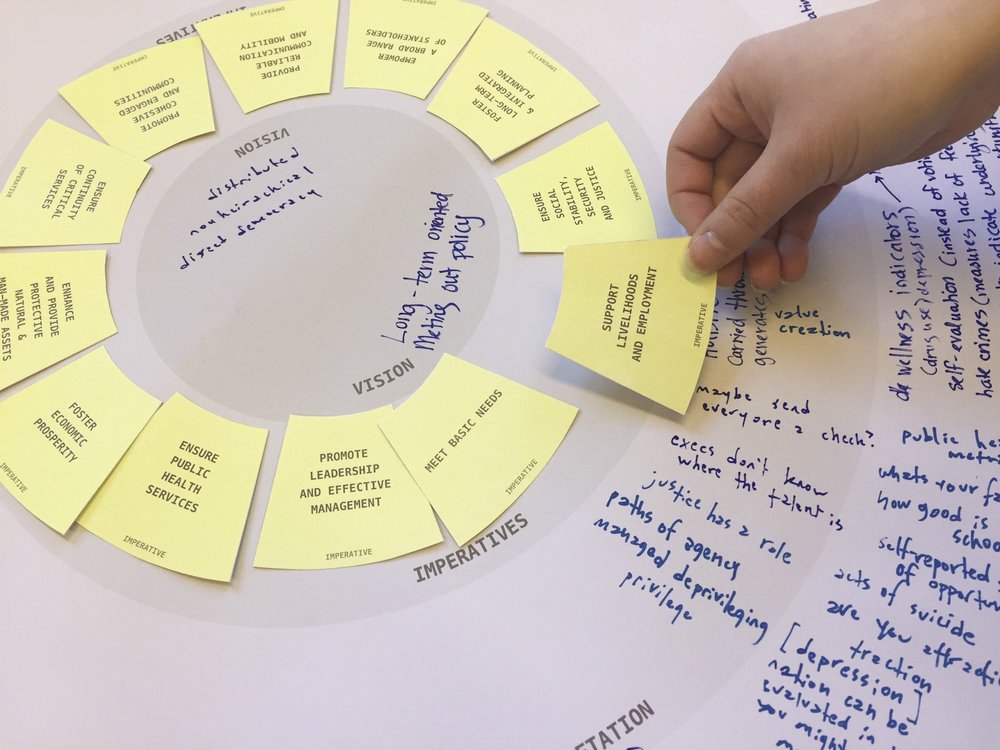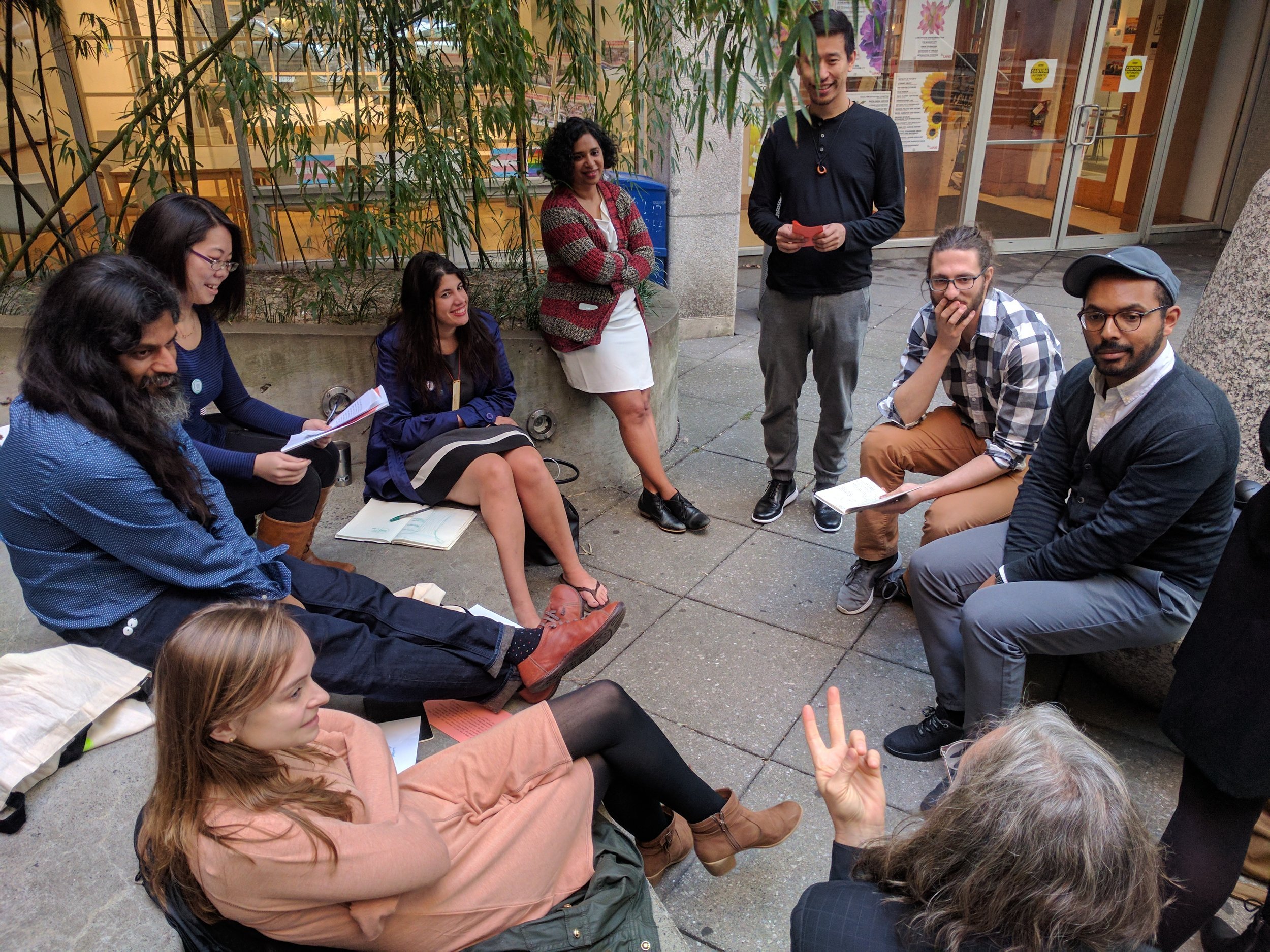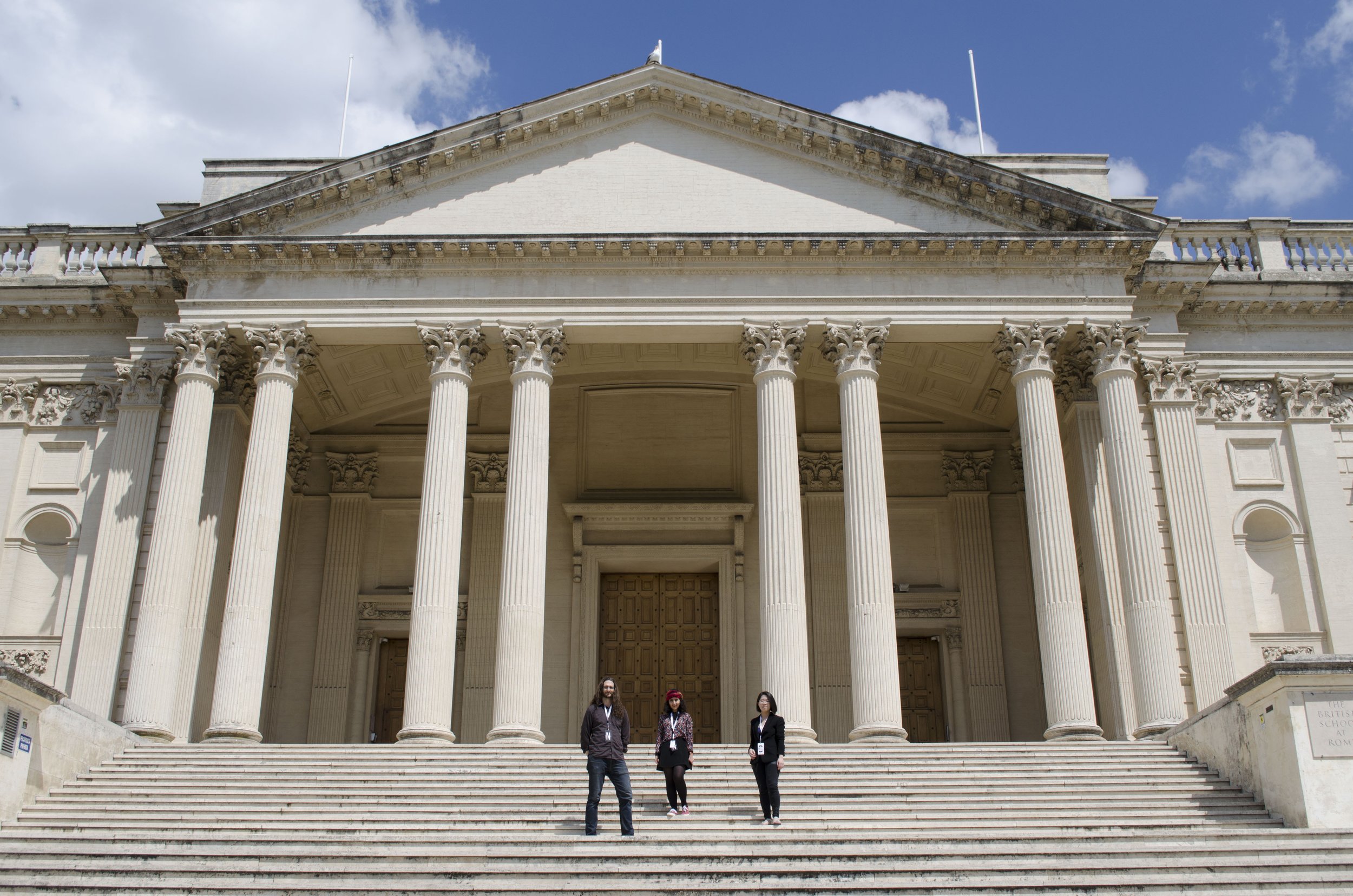Speculation as a Co-Design Strategy
Can we use stories as framing tools to gather designers, technologists, theorists, scientists and policymakers into spaces for future thinking?
Our research approach uses design to democratize conversations about the future in response to current challenges and opportunities. This strategy builds on well-known frameworks such as the British Design Council’s Double Diamond process and Joseph Voros’ Futures Cone. By using speculation as part of a collaborative process, we hypothesize that we can create more dynamic, imaginative, and inclusive discussions that have the potential to influence policy decisions and industry practices.
Define the Current State
We identified key events and trends in current discussions around developing technologies through secondary research. This included the launch of the United Nations’ Sustainable Development Goals, debates around the ethics of decisionmaking in driverless vehicles, basic income pilots starting in Finland, Ontario and California, and the results of the 2016 US elections. We then conducted interviews with policymakers, field experts and strategic foresight analysts to understand current problems and opportunities presented by these ideas of automation, equality, happiness, and governance. By mapping out the current state of these issues, we were able to create informed design fictions for the next step of our research process.
Materialize Design Fictions
A design fiction uses storytelling to test future systems, their potential impacts, and identify preferable, alternative scenarios. As our first design fiction, we created a short film titled Equality Analytics: Stories of Driverless Governance. We use this film as a prompt to begin facilitating a co-futuring process. The scenario takes place during an age of scarcity, when the American Dream is no longer driven by materialism, but instead the promise of absolute equality. To accommodate this shift, the Nevada Bureau of Predictive Management creates Glenda: a benevolent algorithm that harnesses predictive analytics to distribute resources in relation to people’s likely energy use. Constituents opt into this emergent form of driverless governance, delighting in state-of-the-art entertainment interfaces that dispense their basic needs. While the algorithm optimizes energy equality, citizens begin to envision the unmeasurable complexities of human life.
The process involves materializing prototype objects and devices in the real world to see how these ideas might be received. By exploring the implications of an alternative worldview and its artifacts, we can learn more about our current perspectives, values and behaviors and how they influence our decisions.
Facilitate Co-Futuring
To create space for co-futuring, we planned and facilitated a two-day transdisciplinary workshop at the 2017 VergeNYC Conference. In partnership with Thicket Labs, we had 15 collaborators from different disciplines create driverless governments to explore their wider implications. To prepare for the event, we developed a collective visioning tool that builds on the Rockefeller Foundation’s City Resilience Framework. Our tool consists of five steps: 1) Vision; 2) Imperatives; 3) Interpretation; 4) Possible Measurements; 5) Misgivings and Reservations; and 6) Adjustments and Opportunities.
Recalibrate and Back Cast
Together, we determined that there is a need for new ethical guidelines in machine learning. After establishing governing structures, our collaborators imagined scenarios demonstrating what it would be like to live under these governments. This process raised interesting themes around regulating structures, data biases, and designing for friction rather than seamless experiences. In working backwards from the kinds of futures we wanted to see, our collaborators used these insights to draft potential guidelines for algorithmic decision-makers to follow.
Impact
We shared the findings of our collaborative research process at the 2017 Design for Next Conference to an international audience of designers, strategists and academics. With similar conversations and guidelines beginning to form across industries, we also plan to develop these principles through our partnerships with different organizations. As we move forward with the Lab’s initiatives, we are actively seeking more speaking engagements, workshop options, and opportunities for collaboration.
Featured
The Design Journal (International)
Design for Next Conference (Rome, Italy)
Proceedings of the 12th European Academy of Design Conference (online)
VergeNYC 2017 Conference (New York City, USA)
Creative Applications Network
Roles
Strategy, Art Direction, Copywriting, Workshops
Team
Corey Chao, Melika Alipour Leili, Winnie Chang, Thicket Labs
Date
Spring 2016







